i know I'm loving this vibe! I'm at about 100 workers so far.I look forward to watching your colony grow. I feel like our queens are racing each other now.
Sent from my iPhone using Tapatalk
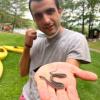
i know I'm loving this vibe! I'm at about 100 workers so far.I look forward to watching your colony grow. I feel like our queens are racing each other now.
Pogonomyrmex occidentalis (1) | Camponotus pennsylvanicus (6) | Lasius aphidicola (4) | | Tapinoma sessile (3) | Lasius spp. (niger group) (2)
Nest Time-lapse (July - September)
July 11
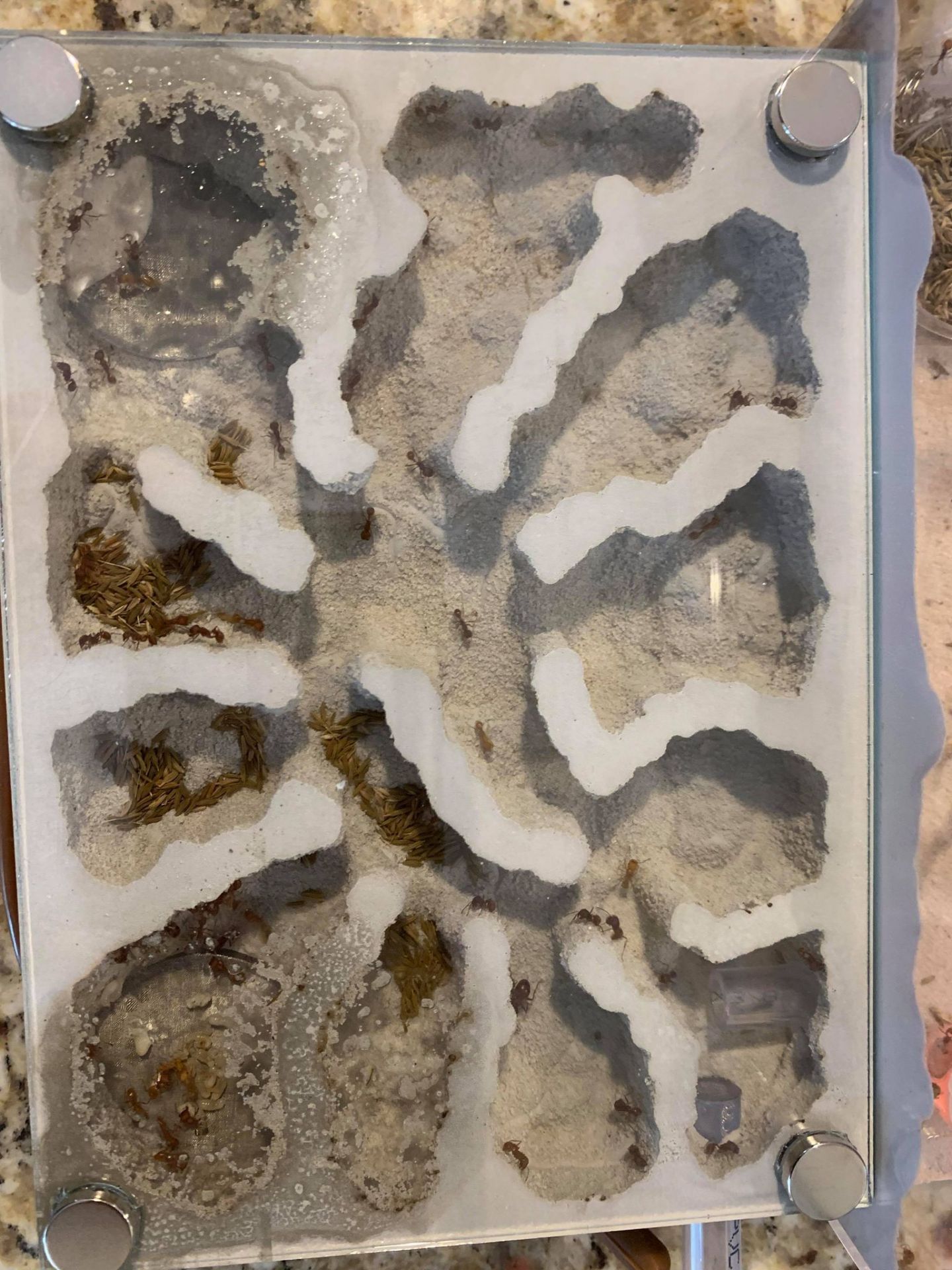
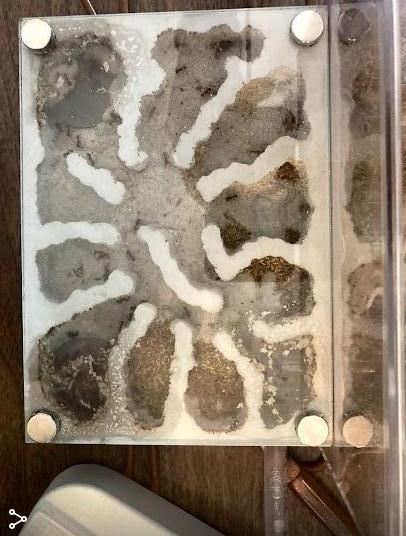
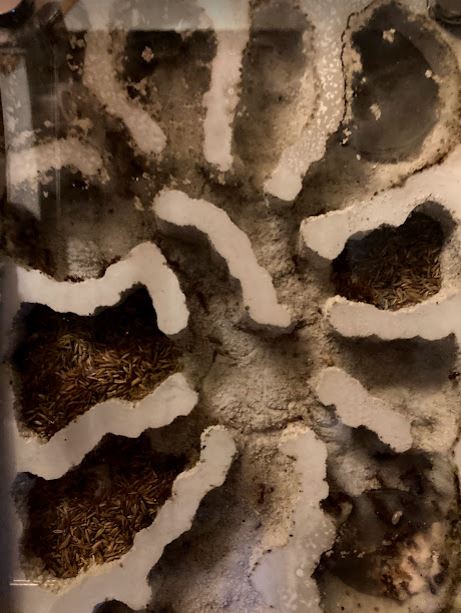
Sept. 5
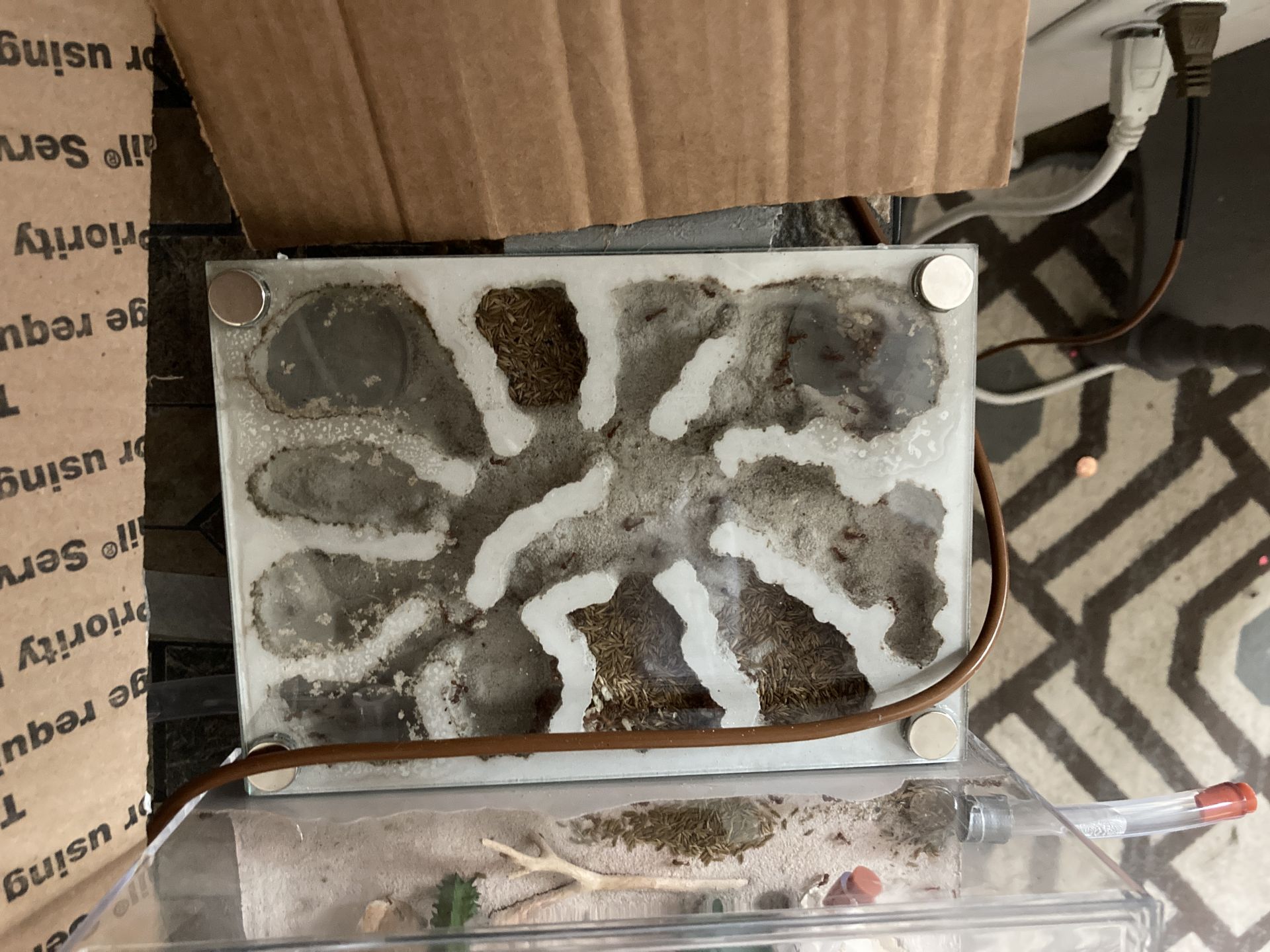
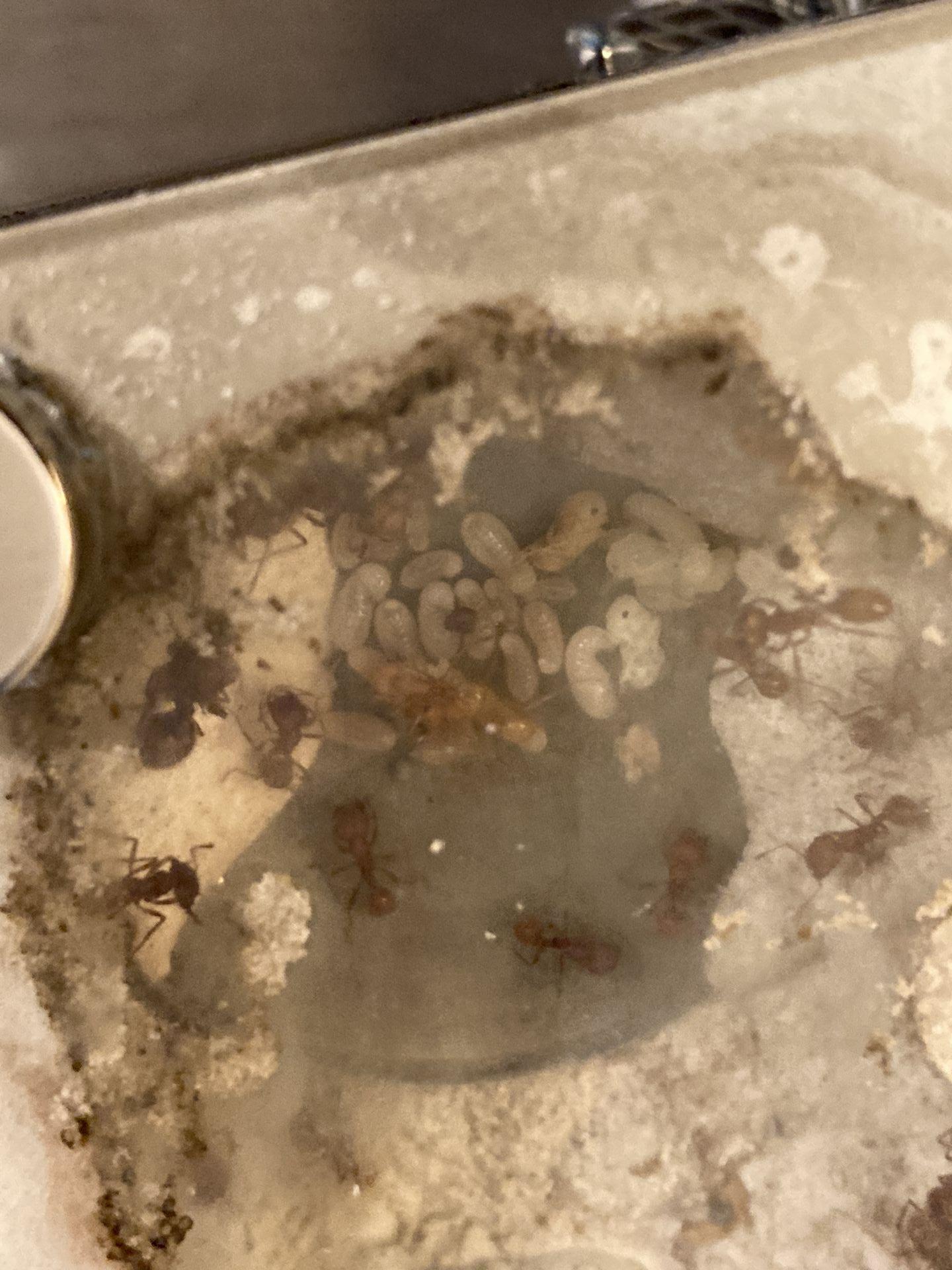
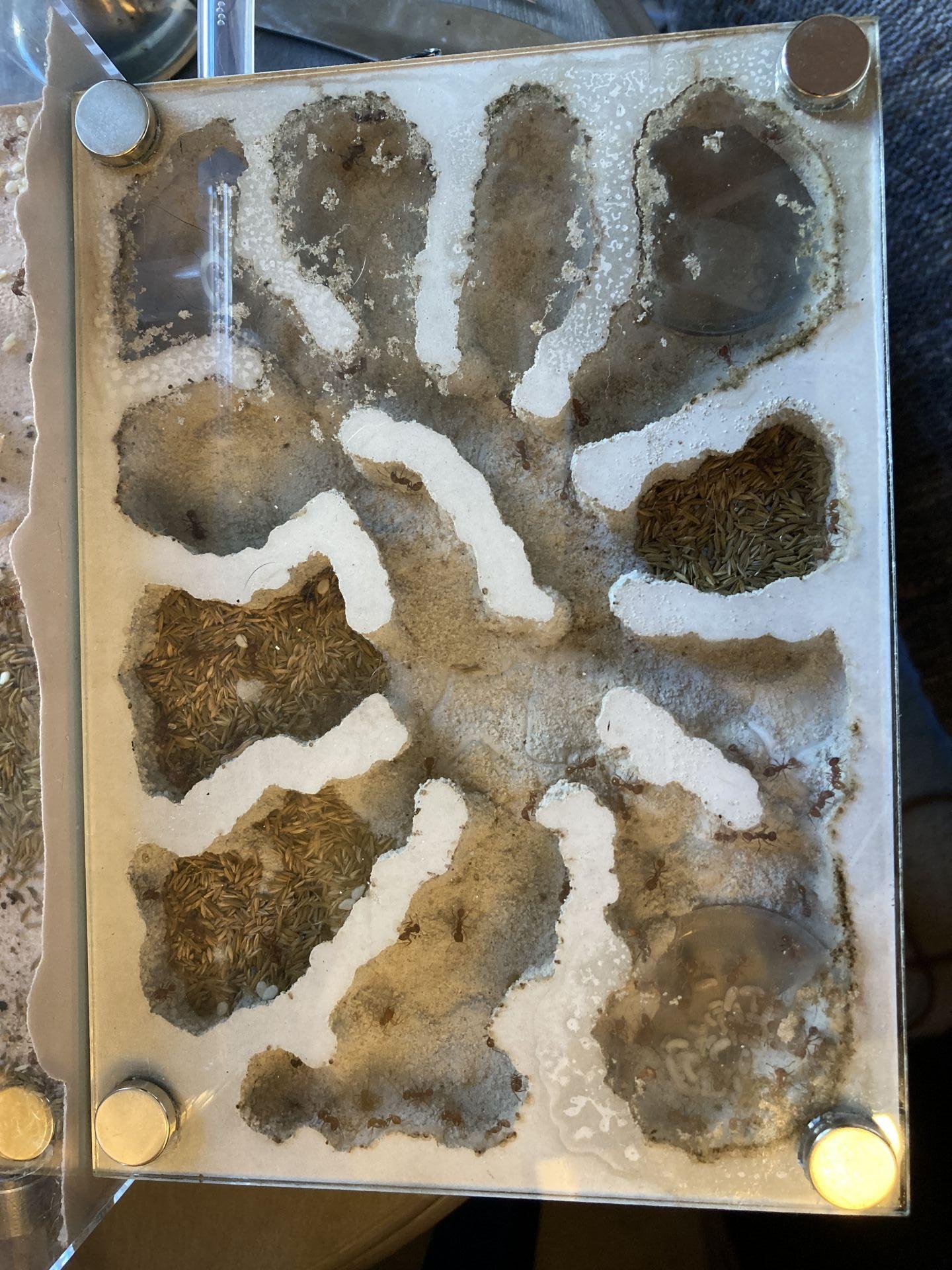
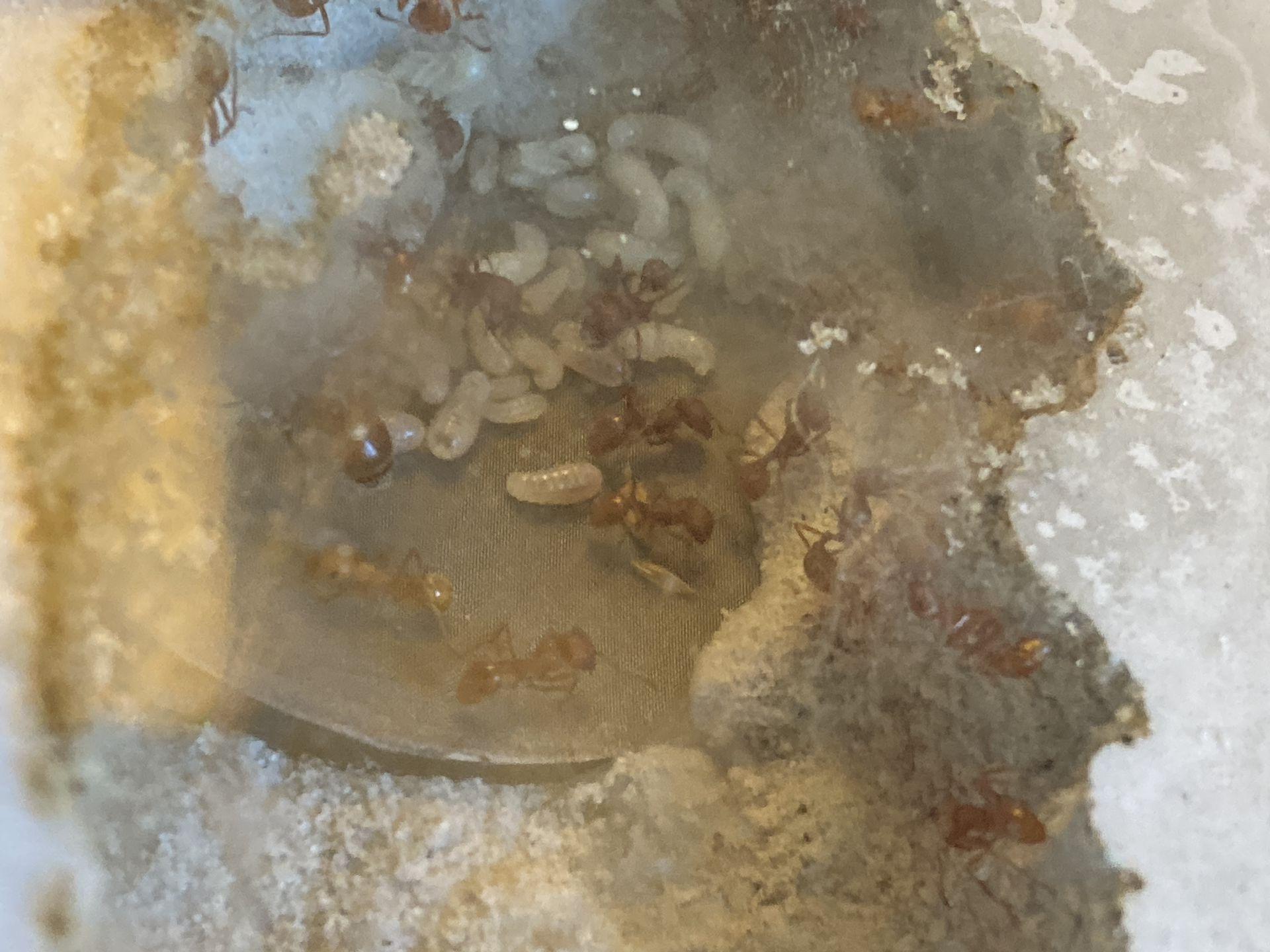
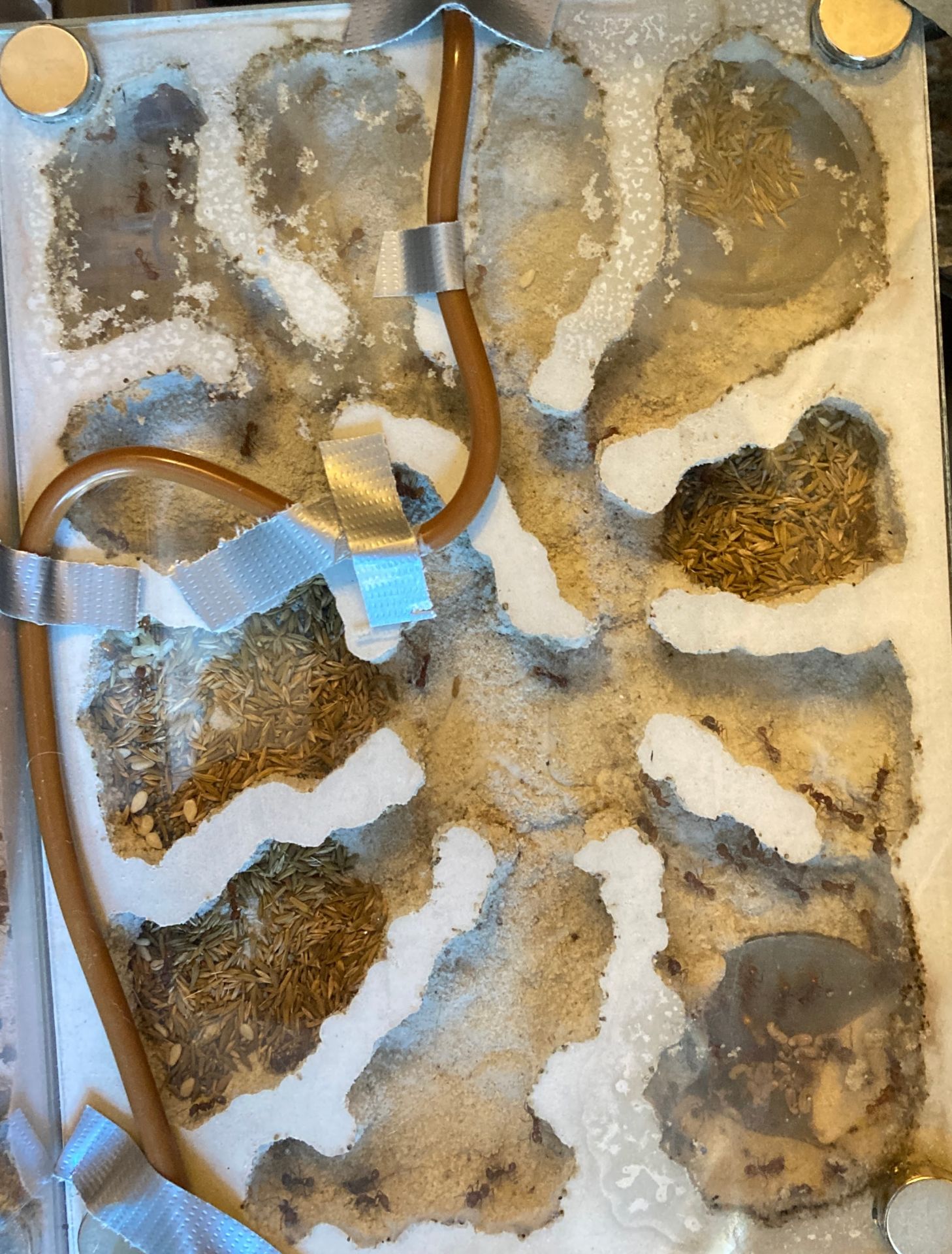
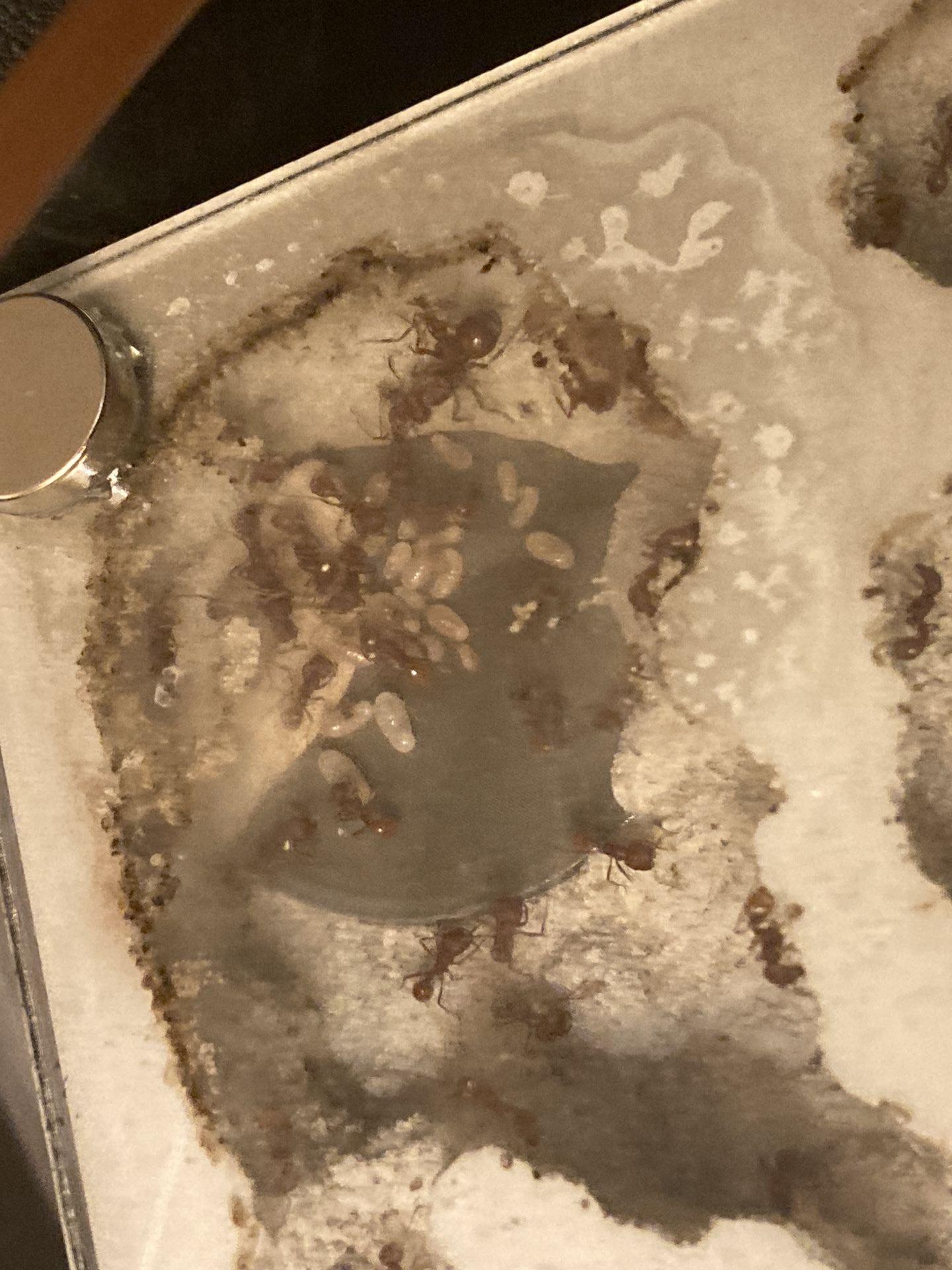
Sept. 8
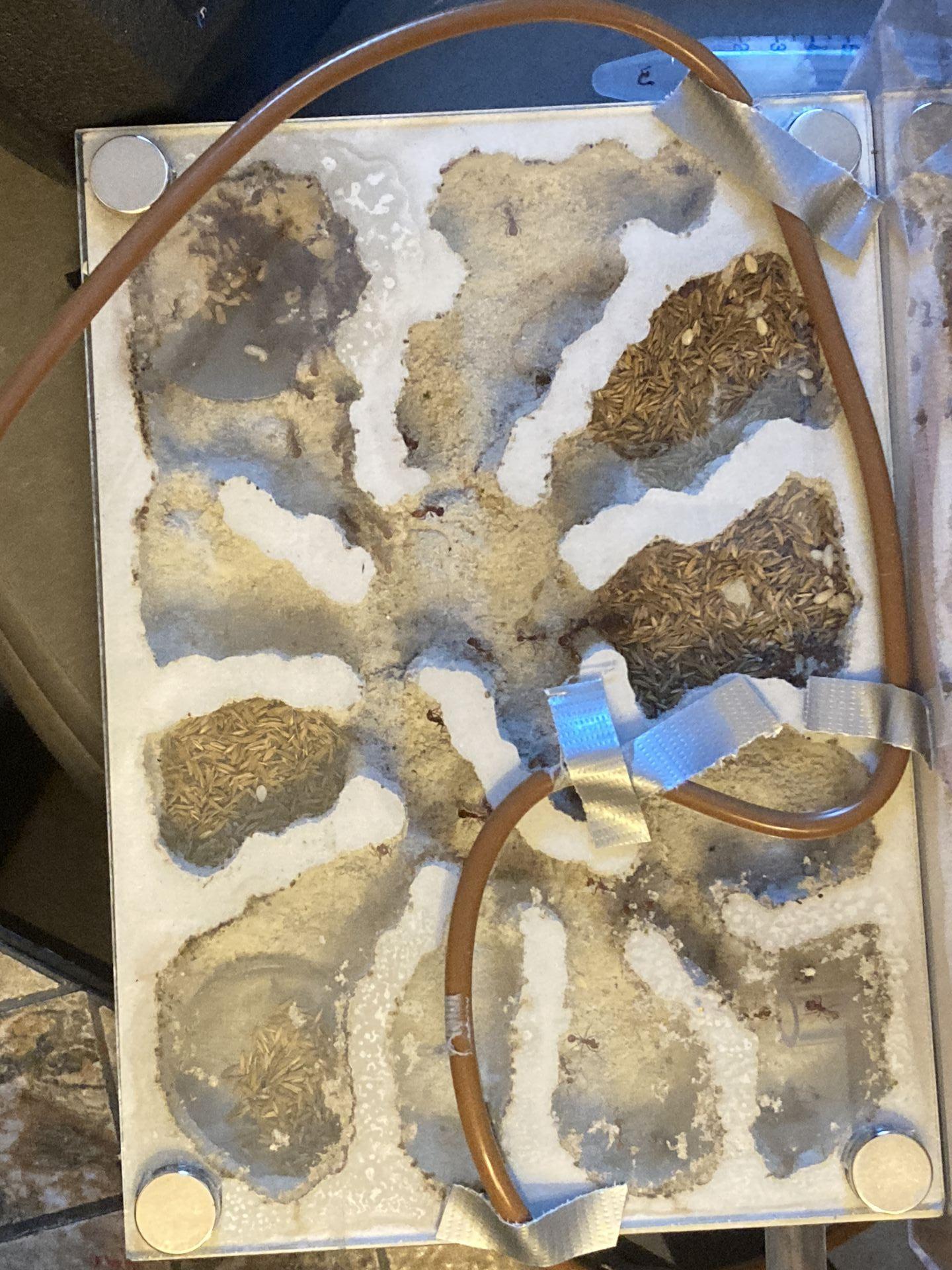
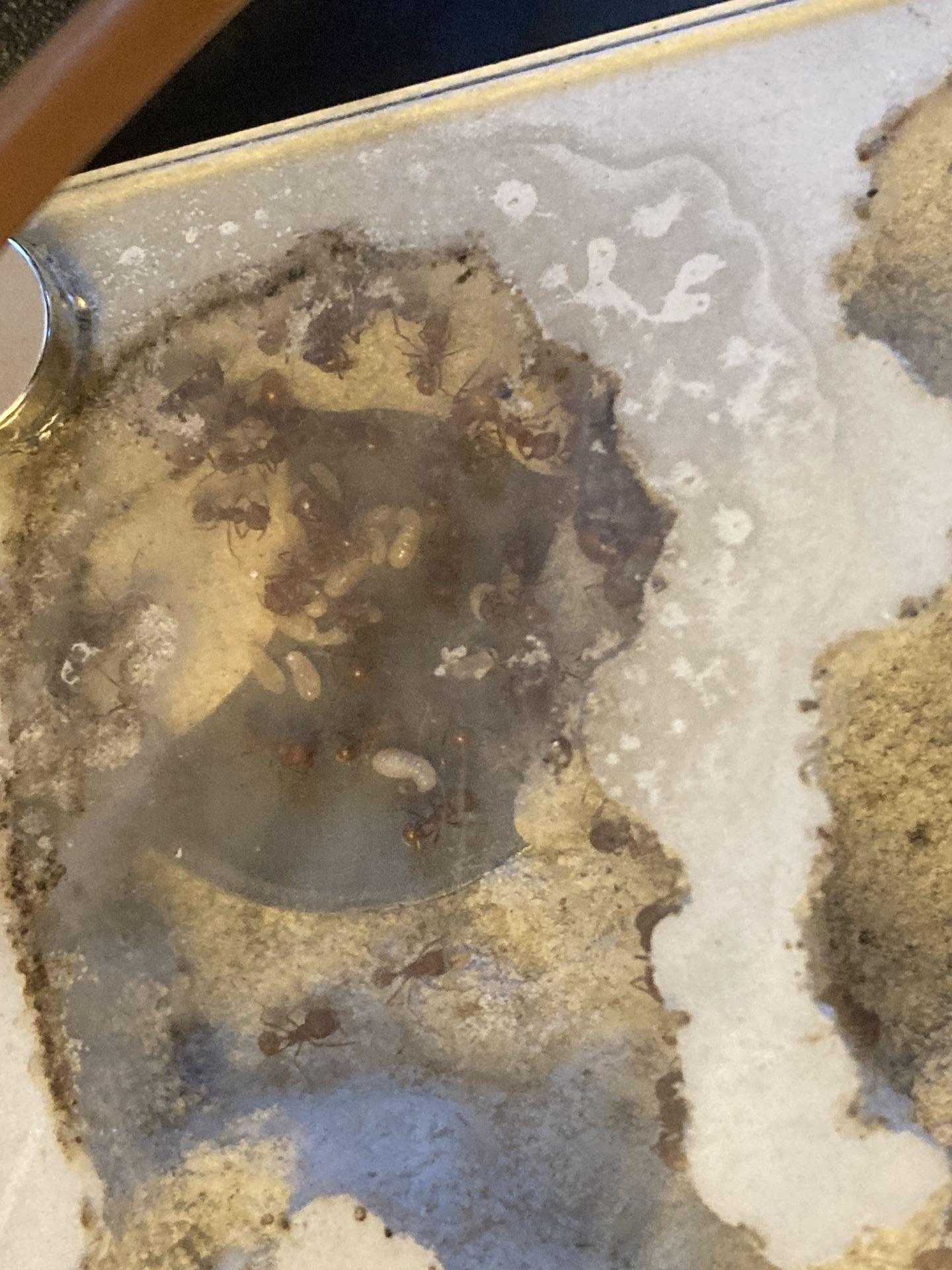
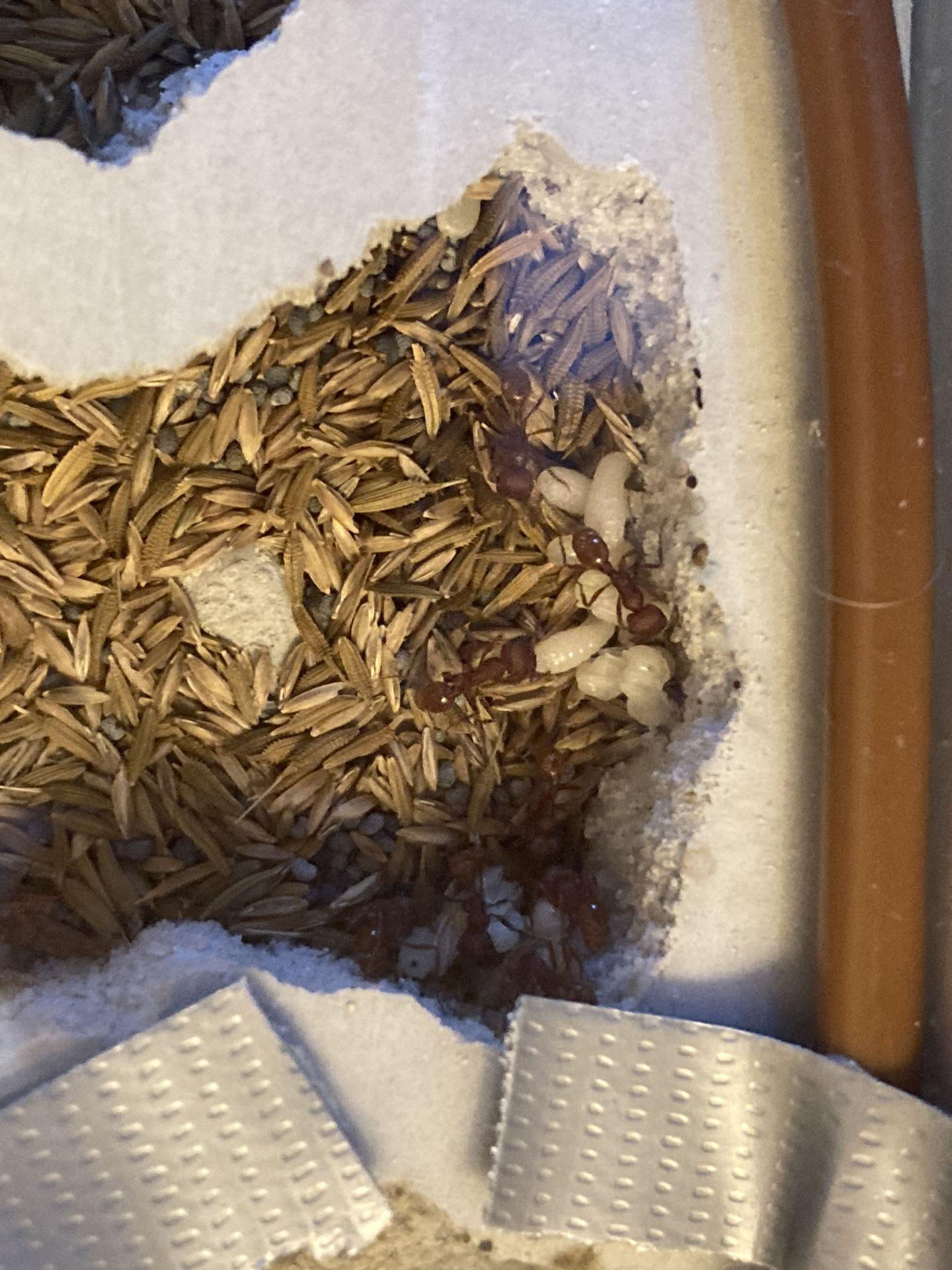
Edited by Arachnids, September 8 2021 - 4:33 PM.
Pogonomyrmex occidentalis (1) | Camponotus pennsylvanicus (6) | Lasius aphidicola (4) | | Tapinoma sessile (3) | Lasius spp. (niger group) (2)
Sept. 8 Population Estimates
Workers: 100
Eggs: ??
Larvae: 30
Pupae: 7
Queen: 1
Pogonomyrmex occidentalis (1) | Camponotus pennsylvanicus (6) | Lasius aphidicola (4) | | Tapinoma sessile (3) | Lasius spp. (niger group) (2)
Sept. 8 Population Estimates
Workers: 100
Eggs: ??
Larvae: 30
Pupae: 7
Queen: 1
I've noticed I have a hard time finding the egg pile sometimes, as often a worker is holding them all at one of the water towers.
Currently kept species
L. neoniger, P. occidentalis, C. modoc, C. novaeboracensis, C. vicinus, T. immigrans, A. occidentalis, S. molesta, P. imparis, M. kennedyi, M semirufus, F. pacifica, P. californica, M. ergatogyna.
Previously kept species
T. rugatulus, B. depilis.
Looking for
Myrmecocystus pyramicus, Myrmecocystus testaceus
Pheidole creightoni, Pheidole inquilina, Crematogaster coarctata, Crematogaster mutans
I've noticed I have a hard time finding the egg pile sometimes, as often a worker is holding them all at one of the water towers.Sept. 8 Population Estimates
Workers: 100
Eggs: ??
Larvae: 30
Pupae: 7
Queen: 1
Pogonomyrmex occidentalis (1) | Camponotus pennsylvanicus (6) | Lasius aphidicola (4) | | Tapinoma sessile (3) | Lasius spp. (niger group) (2)

Starting this July I'm posting videos of my ants every week on youTube.
I like to make relaxing videos that capture the joy of watching ants.
If that sounds like your kind of thing... follow me >here<.
So far the ants LOVE the poppy seeds. Even more than bluegrass and dandelion seeds. The seeds disappear from the outworld in mere hours.Sept. 5
Feeding
After the colony accepted the poppy seeds I decided I should withhold seeds for a little bit. Their stores are filling up with seeds and there's more seeds (either dandelion or bluegrass) in the outworld that they haven't touched yet.
Also, I purchased other seeds from my grocery store to experiment with:
- Celery
- Poppy
- Dill
- Sesame
- Chia
- Flax
Edited by Arachnids, September 16 2021 - 4:16 AM.
Pogonomyrmex occidentalis (1) | Camponotus pennsylvanicus (6) | Lasius aphidicola (4) | | Tapinoma sessile (3) | Lasius spp. (niger group) (2)
Observations on Graveyard Behavior
Workers carry dead individuals to the same "trash pile" they use for seed hulls and feces. This happens to be right against the outworlds nestmate port.
Image from Sept. 2
Workers also carry individuals that are not dead but appear to be injured or dying. On one occasion, I noticed an ant that was injured getting carried by a worker to the trash pile. The injured ant seemed to resist as it pushed back with its legs as if to say "No! I'm not dead yet stupid!"
This photo shows the injured ant, curled up at the bottom of the frame, and the worker that will soon be carrying it just above.
This shows the worker and one other making some sort of sensory interaction with the dying ant. I wonder if this is how they assess the health of the ant.
This shows the worker trying to relocate the dying ant to the trash pile. The dying ant is actively resisting by pressing its legs out and forward.



Pogonomyrmex occidentalis (1) | Camponotus pennsylvanicus (6) | Lasius aphidicola (4) | | Tapinoma sessile (3) | Lasius spp. (niger group) (2)
Ants are all about efficiency. They don't have social classes or levels. If an ant can be nursed back to health to serve the colony she will be. If she is too far gone she probably won't. There is a smell, a pheromone that makes ants want to take their sisters to the graveyard. In an experiment a scientists put this scent on healthy ants and they were carried to the graveyard against their will. (and they'd just walk back to the nest, eventually the pheromone wore off)
Sometimes I've seen ants moving an ant to the graveyard AND trying to nurse her back to health. Not all cases are clear cut.
Starting this July I'm posting videos of my ants every week on youTube.
I like to make relaxing videos that capture the joy of watching ants.
If that sounds like your kind of thing... follow me >here<.
Ants are all about efficiency. They don't have social classes or levels. If an ant can be nursed back to health to serve the colony she will be. If she is too far gone she probably won't. There is a smell, a pheromone that makes ants want to take their sisters to the graveyard. In an experiment a scientists put this scent on healthy ants and they were carried to the graveyard against their will. (and they'd just walk back to the nest, eventually the pheromone wore off)
Sometimes I've seen ants moving an ant to the graveyard AND trying to nurse her back to health. Not all cases are clear cut.
Pogonomyrmex occidentalis (1) | Camponotus pennsylvanicus (6) | Lasius aphidicola (4) | | Tapinoma sessile (3) | Lasius spp. (niger group) (2)
September 23, 2021
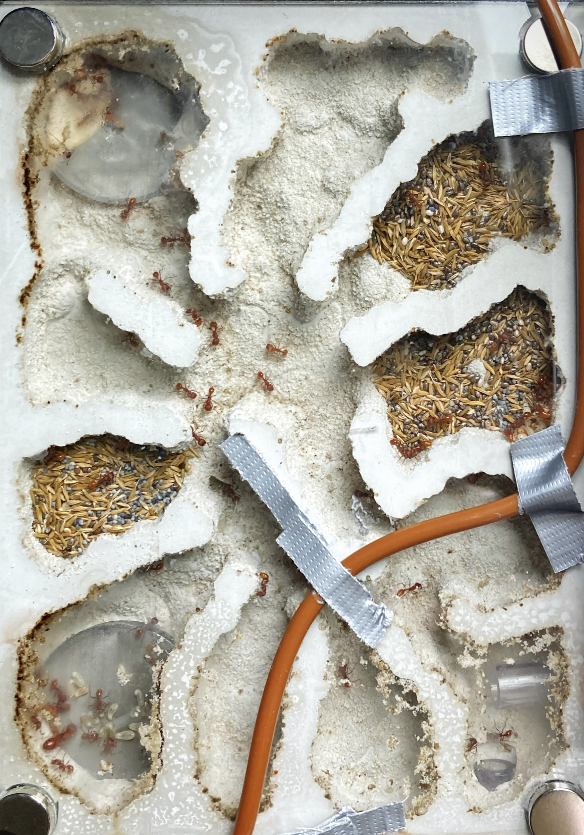
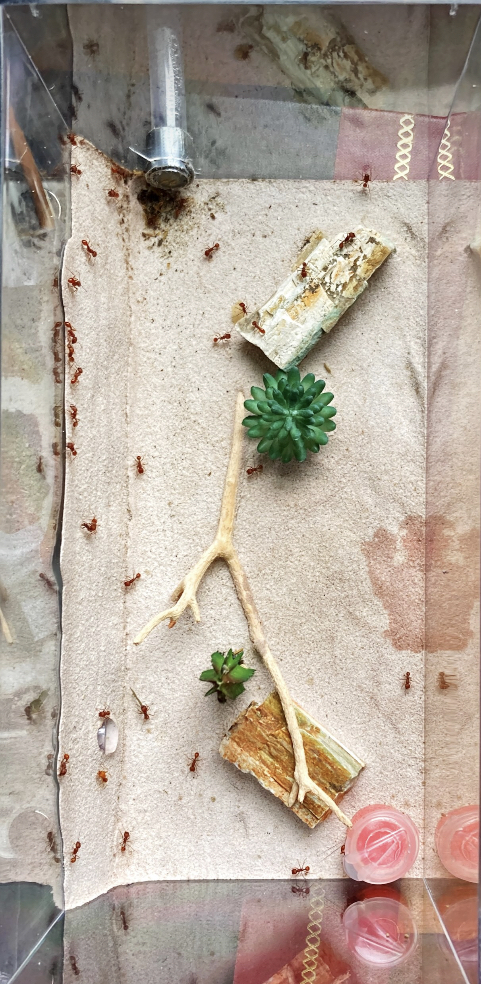
Pogonomyrmex occidentalis (1) | Camponotus pennsylvanicus (6) | Lasius aphidicola (4) | | Tapinoma sessile (3) | Lasius spp. (niger group) (2)
Current Population Estimates
100 Workers
10 Pupae
20 Larvae
1 Queen
Total: 131
Pogonomyrmex occidentalis (1) | Camponotus pennsylvanicus (6) | Lasius aphidicola (4) | | Tapinoma sessile (3) | Lasius spp. (niger group) (2)
Seed Experiments
I have been testing out different types of seeds to qualitatively understand their food preferences. So far, Celery Seed was completely rejected. A few Sesame Seeds were initially brought into the nest, however they ended up moving the rest to the garbage pile. Chia and Poppy seeds would disappear in just a few hours after I put them in the outworld. They seemed to prefer these over the Dandelion and the Bluegrass.
I suspect their preferences are close to this (1 being most preferred):
Next trials will be for Dill and Flax
Pogonomyrmex occidentalis (1) | Camponotus pennsylvanicus (6) | Lasius aphidicola (4) | | Tapinoma sessile (3) | Lasius spp. (niger group) (2)
My pogonomyrmex occidentalis colony has a diet of sunburst ant nectar, dandelion seeds, chia seeds, poppy seeds, fruit flies, and fish food flakes. They love it all. I put fluon in their outworld, as they can actually jump a bit, and have attempted to escape. Mack posted a video demonstrating that in the FB group.
You are right about the fish flakes. My colony loves them!
Pogonomyrmex occidentalis (1) | Camponotus pennsylvanicus (6) | Lasius aphidicola (4) | | Tapinoma sessile (3) | Lasius spp. (niger group) (2)
My pogonomyrmex occidentalis colony has a diet of sunburst ant nectar, dandelion seeds, chia seeds, poppy seeds, fruit flies, and fish food flakes. They love it all. I put fluon in their outworld, as they can actually jump a bit, and have attempted to escape. Mack posted a video demonstrating that in the FB group.
You are right about the fish flakes. My colony loves them!
Yeah, my colony always gets super excited about them. They take them straight to the larvae every time.
Currently kept species
L. neoniger, P. occidentalis, C. modoc, C. novaeboracensis, C. vicinus, T. immigrans, A. occidentalis, S. molesta, P. imparis, M. kennedyi, M semirufus, F. pacifica, P. californica, M. ergatogyna.
Previously kept species
T. rugatulus, B. depilis.
Looking for
Myrmecocystus pyramicus, Myrmecocystus testaceus
Pheidole creightoni, Pheidole inquilina, Crematogaster coarctata, Crematogaster mutans
Currently kept species
L. neoniger, P. occidentalis, C. modoc, C. novaeboracensis, C. vicinus, T. immigrans, A. occidentalis, S. molesta, P. imparis, M. kennedyi, M semirufus, F. pacifica, P. californica, M. ergatogyna.
Previously kept species
T. rugatulus, B. depilis.
Looking for
Myrmecocystus pyramicus, Myrmecocystus testaceus
Pheidole creightoni, Pheidole inquilina, Crematogaster coarctata, Crematogaster mutans
0 members, 1 guests, 0 anonymous users